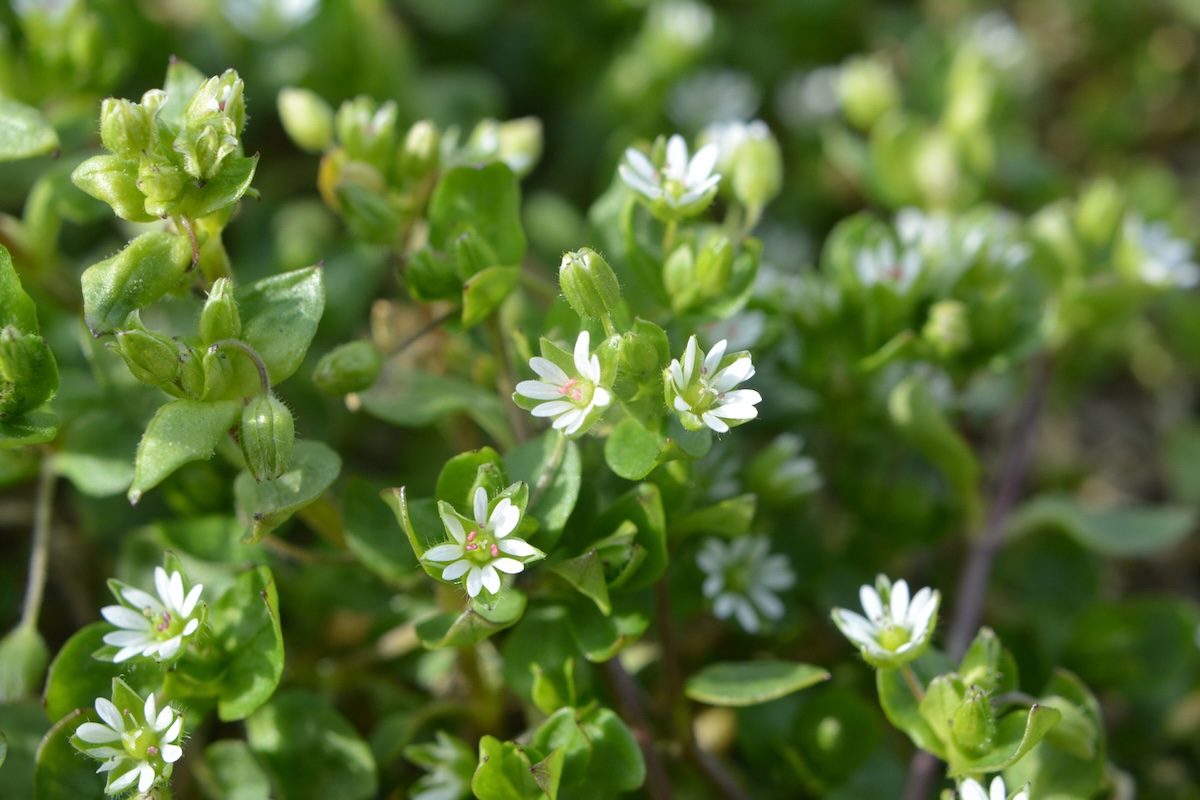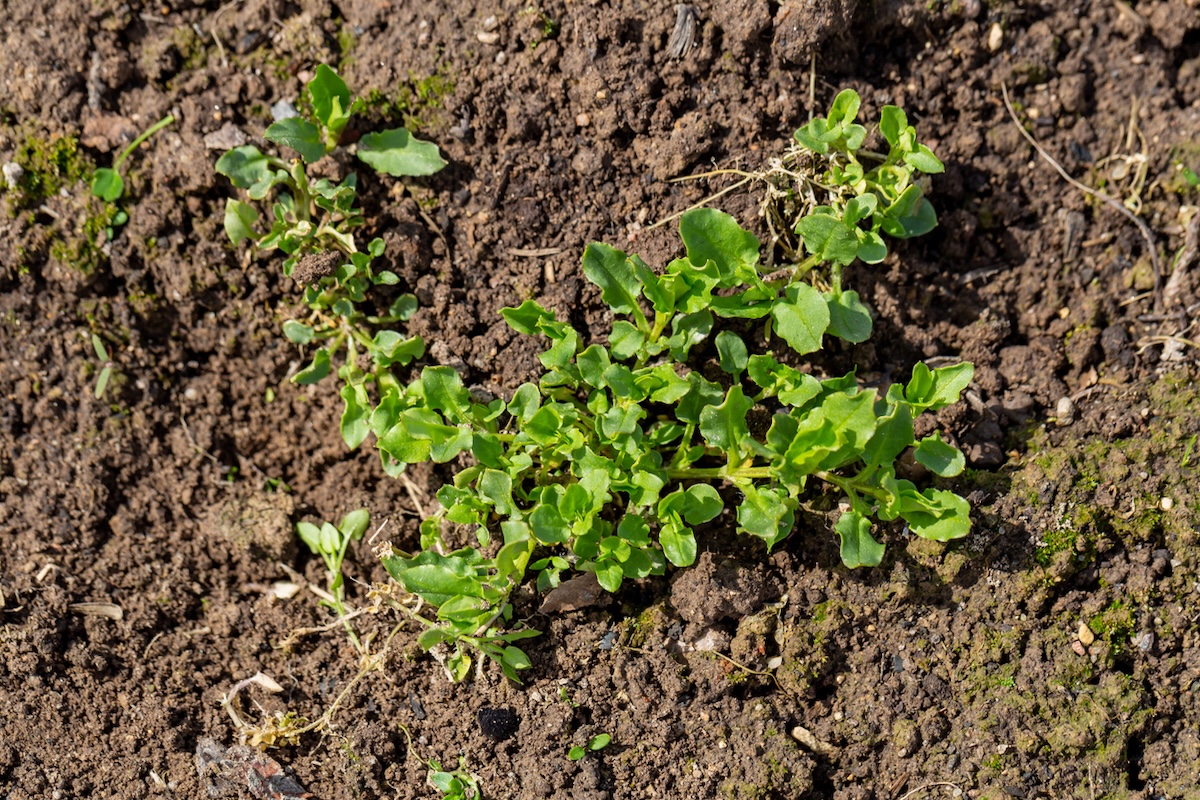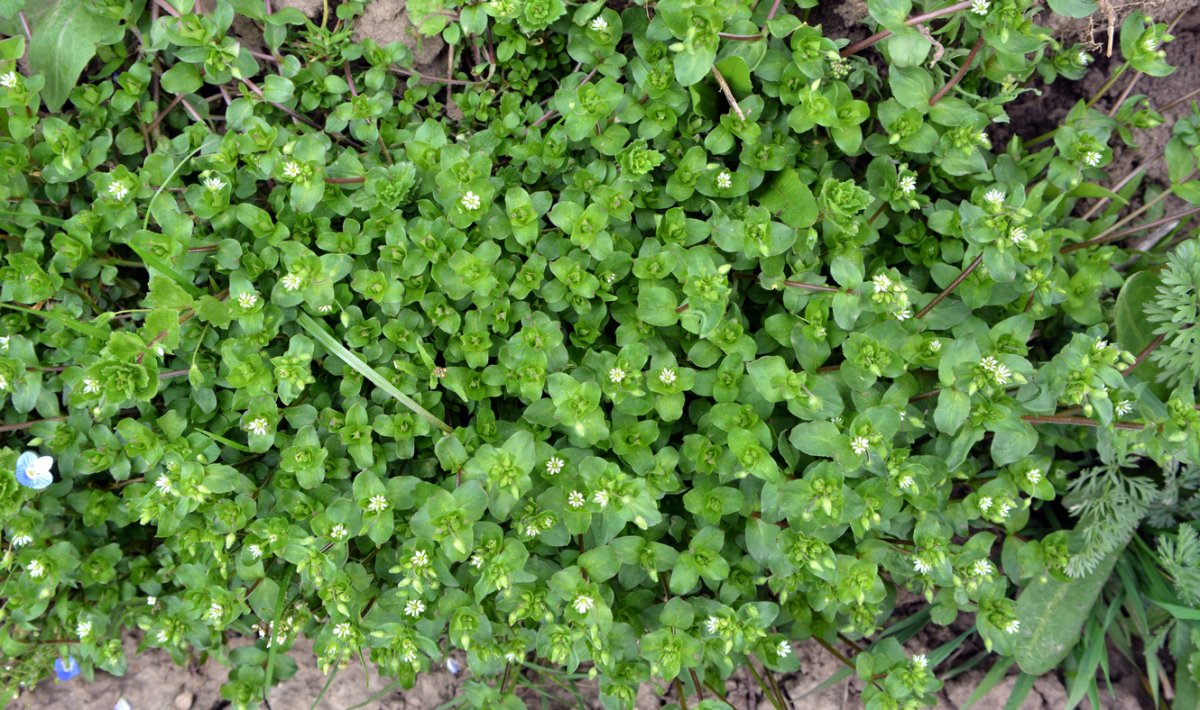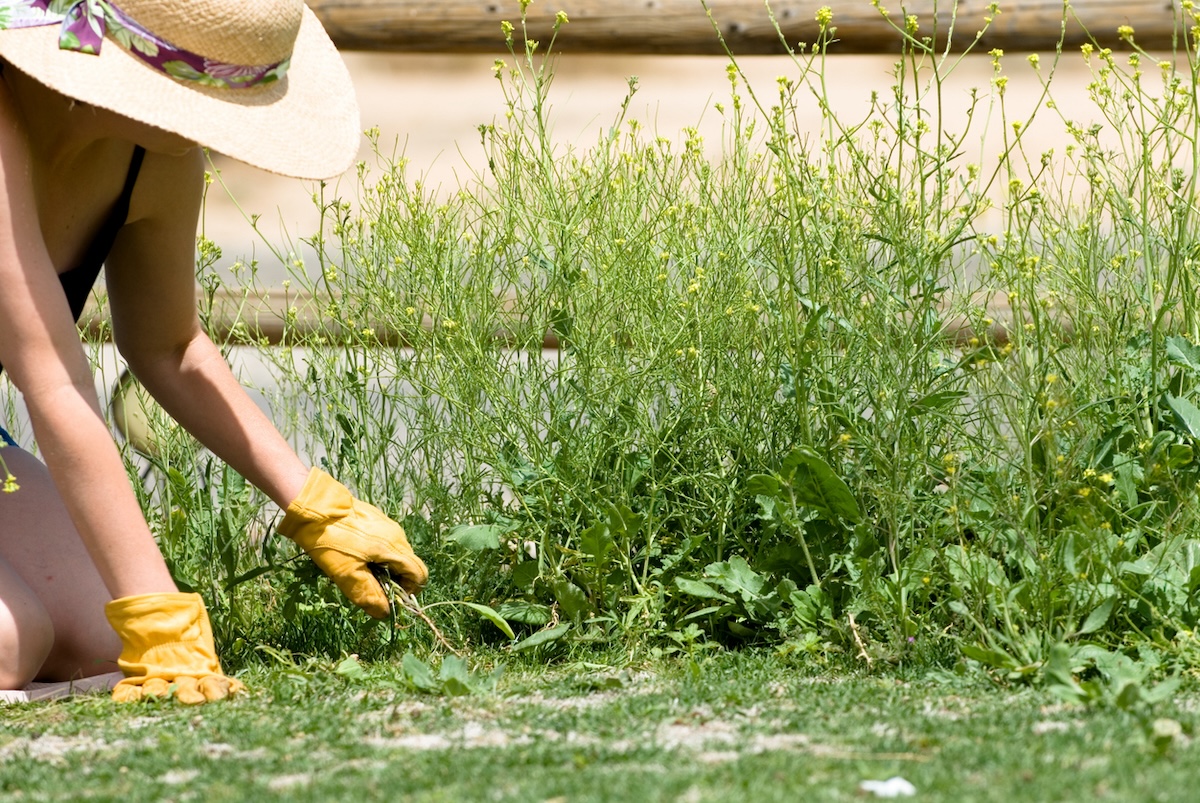

We may earn revenue from the products available on this page and participate in affiliate programs. Learn More ›
Keeping a lush, green lawn can be challenging. With many types of lawn weeds, it seems like we’re always fighting something. One invasive weed that may be trying to take over your lawn is chickweed. Learning how to get rid of chickweed can help you reclaim your lawn, improving your home’s curb appeal and providing you with a nice yard to use for entertaining and other activities. Ahead, we’ll cover some natural methods to help you remove this nuisance without resorting to the use of chemical pesticides. We’ll also share some tips to help you keep chickweed from rearing its ugly head again.
What Is Chickweed and Is It Destructive?

So, what is chickweed, anyway? As Ryan Farley, CEO of LawnStarter, explains, “Chickweed is a low-growing plant that’s known for outcompeting many common garden plants, as well as some produce or crops.” This cool-season plant thrives in moist, nitrogen-rich soil, though it can grow in other soil types as well. Chickweed spreads quickly. It can reseed itself, allowing up to five generations of the chickweed plant to be produced each season. Farley says, “Its ability to spread very quickly in cool conditions make it a problem for many gardeners, and also make it difficult to get rid of.”
Common Chickweed vs. Mouse-Ear Chickweed


While there are over 25 types of chickweed, common chickweed and mouse-ear chickweed are the two that you’re most likely to find invading your lawn. As its name suggests, common chickweed is the most prevalent type. This weed doesn’t grow very tall—only up to about 2 inches—but it grows very densely, which can make it more difficult to remove. Common chickweed has smooth leaves.
Like common chickweed, mouse-ear chickweed also grows in dense patches. It is easy to distinguish the two types by looking at the leaves. While common chickweed has smooth leaves, the University of California Division of Agriculture & Natural Resources explains that the leaves on mouse-ear chickweed are hairy. These leaves are also darker and have a stickier texture than those on common chickweed. Both common chickweed and mouse-ear chickweed produce white flowers with five petals. However, because of the ways the petals are clefted at the ends, mouse-ear chickweed appears to have 10 petals. Dan Bailey, president of WikiLawn Tampa Lawn Care, notes, “Mouse-ear chickweed is harder to remove because it continuously reseeds itself.”
How to Get Rid of Chickweed Naturally
Finding chickweed in your lawn doesn’t have to be the end of the world. There are several natural ways to get rid of this nuisance plant. And, if you’re looking to keep lawn care costs down, you should be able to remediate the problem without hiring a professional lawn service company.
Pull chickweed from the lawn.
“I would say the absolute best way to get rid of chickweed naturally is just to get your hands dirty and pull these weeds when you see them,” says Farley. He adds that because the weeds “have a shallow root system that’s pretty easy to pull up all at once,” this can be a relatively easy way to kill chickweed. After removing the weeds from your lawn, you can throw them out, compost them, or even add them to a salad—according to the Missouri Department of Conservation, chickweed is an edible plant.
Smother chickweed.
If you don’t want to pull up the weeds by hand, you can also kill chickweed grass by smothering it. Bailey explains, “You can smother the weed by covering the afflicted area with mulch. Keep it covered for 3 weeks to ensure the chickweed is completely dead.” Alternatively, you can also place a tarp over the patches of chickweed and leave it in place for several weeks to kill it. If you use a tarp, though, you’ll want to weigh it down to make sure it doesn’t blow away or shift off the area you’re targeting.
Aerate the lawn.
Weeds tell us a lot about our soil. If you have chickweed, it often signals that your soil is not draining properly or that it is overly compacted. Aerating the lawn can combat these potential issues, thus helping prevent chickweed weeds from taking over. After aeration and removal of the chickweed, planting a tougher grass variety in the affected area may help decrease the chances of the weed returning.
Apply horticultural vinegar.
Horticultural vinegar is an effective organic weed killer. Bailey explains, “Its acetic acid is a good weapon against most invasive plants.” To be effective, you’ll want to apply the vinegar chickweed killer every other day, targeting the entire surface of the weed along with the bottom of the stem. “Just make sure you wear protective equipment for your hands and eyes,” Bailey cautions.
Tips for Preventing Chickweed in Your Lawn and Gardens

After getting rid of chickweed, there are a few steps you can take to prevent it from popping back up on your lawn or in your garden. They include:
- Water less frequently, but deeply: Frequent, shallow watering will cause chickweed to invade your lawn quickly. To prevent this, aim to only water a few times per week, but give the lawn a heavy watering during these sessions. Doing so will result in stronger grass, preventing the shallower roots of the chickweed from taking over.
- Keep your grass longer: When the grass is very short, more sunlight will reach the chickweed. Conversely, when the grass is kept longer, it will block the sunlight and keep it from reaching the weed.
- Add mulch to garden beds: Mulching garden beds will prevent air or sunlight from reaching chickweed sprouts, preventing them from being able to grow and thrive.
